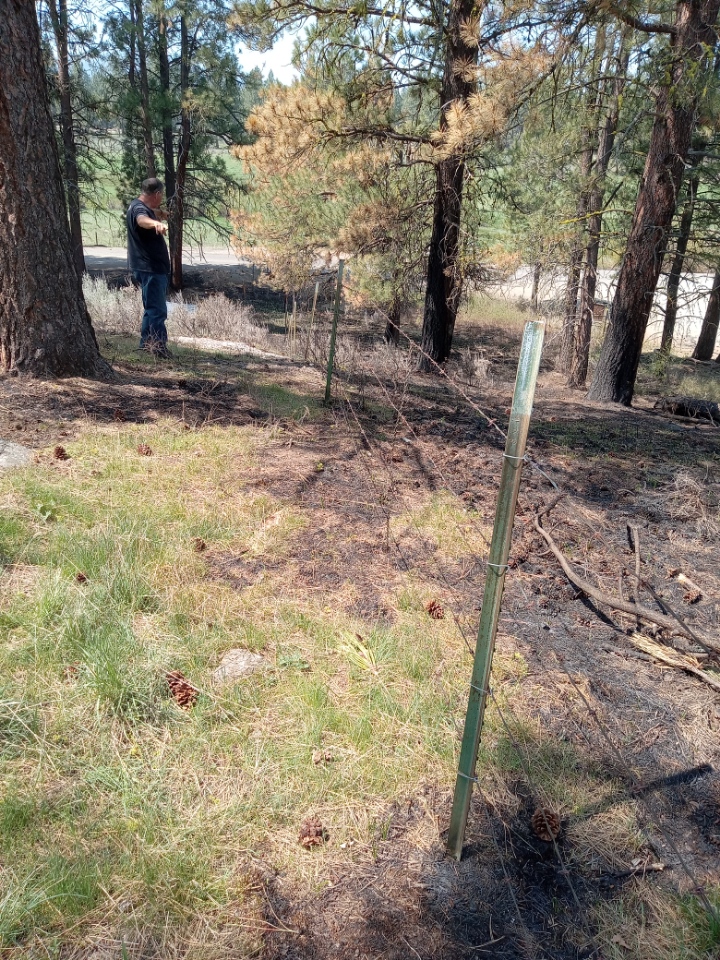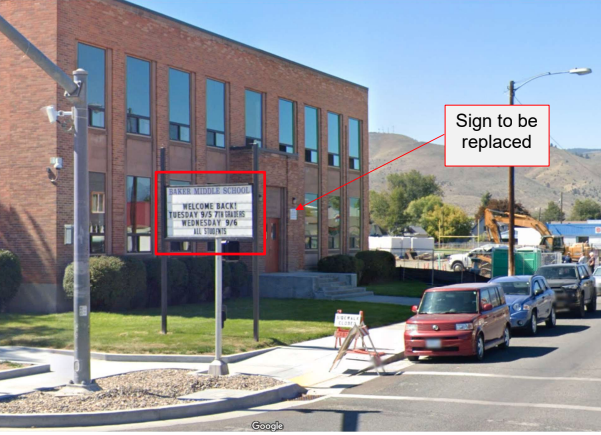Snow’s still hanging around, but fire danger is rising fast
Published 12:00 am Friday, May 16, 2008
By ED MERRIMAN
Baker City Herald
After responding to the season’s first forest fire this week a runaway debris burn on private land near Unity the Oregon Department of Forestry is warning landowners that people who fail to file and follow a burn plan are liable for firefighting costs.
Keith Shollenberger, ODF assistant forester at the Baker City office, said most human-caused fires happen in spring or fall, and they often happen because forest landowners and others wrongly assume the fire risk is low.
andquot;We had an incident Monday where a guy started a debris pile on fire and it got away,andquot; Shollenberger said. andquot;The landowner started it with the intent to clean up material from a precommercial thinning. It got away from him and we had to get an engine over there to help him put it out.andquot;
Shollenberger said the main fire burned about half an acre, and embers from that fire blew across Highway 26 and started a spot fire on the other side of the highway.
The spot fire was just getting going and burned an area about 5 feet in diameter before firefighters extinguished it.
Rancher George Hardy said he and his son, Rob, started the fire to burn brush and limbs cluttering up a fence line where a tree fell last fall during a thinning operation.
andquot;There was a bunch of limbs and stuff there, and we just started a fire to get it away from the fence,andquot; Hardy said. andquot;We had 4 feet of snow up here this winter. The ground absorbed the moisture and it was so wet I never gave it a thought when we lit the fire.
andquot;I guess that was a mistake. The ground was wet, but the stuff on top was drier than we thought it was,andquot; Hardy said. andquot;The fire got into the grass and pine needles it got away from us. It started moving faster than we could shovel dirt, so we called (ODF) and they sent a couple engines out here.andquot;
Sen. Ted Ferrioli, R-John Day, said the Hardy fire should serve as a wake-up call to the ODF and U.S. Forest Service officials that the dates they set for the official start of fire season and associated limits on prescribed burns are too late in the year.
Ferrioli said the Hardy fire is a reminder that despite the deep winter snowpack, forests in some parts of Northeastern Oregon are too dry, due to last ummer’s drought, to allow prescribed burning.
A runaway fire this time of year can cover some ground before firefighters arrive, because summer firefighting crews and equipment are not yet in place, as Hardy discovered.
Everett Baumeister, an ODF forester from the Unity area, said the ODF Baker sub-unit has three fire engines. During the summer one of those engines, with a three-person crew, is stationed at Unity, about eight miles from the Hardy fire.
andquot;When the call came in Monday, we had to drive 65 miles from Baker City to get to the fire, because we didn’t have an engine or crew at Unity yet,andquot; Baumeister said, adding that one ODF engine and crew and one Forest Service engine and crew responded to the Hardy fire, but it took more than an hour to get there.
Hardy said he called ODF because he has worked with Baumeister and the Unity fire crew before. However, in hindsight, Hardy said andquot;what we should have done, I guess, is call the Unity fire department.
andquot;It would have been quicker for us if we’d had the Unity fire department come out. They’re right here, and we pay them for fire protection,andquot; Hardy said.
The ODF and Forest Service crews knocked the fire out Monday, and Hardy and his son mopped up the blaze Tuesday.
Shollenberger said Hardy’s son, Rob, was given notice Tuesday that andquot;it was his fire and he is responsible for putting it out.andquot;
He said forest landowners may be held liable for the entire firefighting costs as well as property damage when they are deemed negligent, don’t take reasonable precautions or fail to file and follow a burn plan, when required.
andquot;Just because we had a large snowpack, people think the fire risk is low, but it’s drier than people think out there,andquot; Shollenberger said.
While summertime is the big season for lightning-caused fires, Shollenberger said human-caused fires are rare during that time of year.
andquot;Usually in the summer people have it in their headsandquot; that there’s a high fire danger, he said.
For forest landowners burning debris during spring, Shollenberger recommends they keep the area around the fire clear of branches, limbs or other flammable stuff.
andquot;Keep the burn pile small and keep feeding it from another pile,andquot; Shollenberger said, adding that large burn piles burn so hot that they create an updraft that can send hot embers skyward.
Wind-blown embers can travel across a highway, or much farther, to spark fires where they land, sometimes a mile or more away from the original fire, Shollenberger said.
andquot;What we really want is for people to take precautions. Having a hose and some kind of water supply on site would be a good thing,andquot; he said.
andquot;If they are doing precommercial thinning as part of a management operation, they need to get a burn and smoke management permit as part of their operation permit,andquot; Shollenberger said.
With smoke management becoming more of a politically hot topic, he said forest landowners and logging operators need to call the Baker ODF office (523-5831) to check weather conditions and find out whether smoke could settle in Baker City, La Grande or other cities.
Shollenberger said ODF’s goal is to convince private landowners, the U.S. Forest Service and BLM to manage smoke so state officials and environmental activists won’t seek to impose a mandatory smoke management program here, like the one adopted years ago in Western Oregon.
Shollenberger said some of the debris-burning in Baker County is associated with fire mitigation programs around homes in the wildland-urban interface.
He said grants are available through ODF for projects designed to protect homes in such areas, which include Sumpter Valley and the west side of Baker Valley.
The ODF grants reimburse landowners for the cost of projects ranging from thinning overcrowded timber stands to clearing brush within 100 feet of homes, and to establish a 30 foot andquot;green zoneandquot; around the structure. That zone can be planted in grass or other fire-resistant vegetation, or covered with rocks, gravel or some other non-flammable material, Shollenberger said.
Landowners also can use grants to hire a consultant to help develop a fire-protection plan.
Shollenberger said Congress began appropriating millions of dollars for fire mitigation projects following the record 2000 fire season, when catastrophic wildfires nationwide topped a then record 1 million acres, dozens of homes burned and 20 people died in Idaho.
Shollenberger points to a report called andquot;Fire in Oregon’s Forests,andquot; which monitored the costs and benefits of several treatment options and found that continuing hands-off management practices winds up burning the trees proponents of that policy intended to save, in addition to burdening agencies with firefighting costs topping $5,000 per acres.
In contrast, conducting prescribed burns to reduce fuel loading costs about $300 per acre, and commercial thinning to reduce fuel loads in overstocked forests actually generated income of $50 per acre, according to the report. Combining thinning prior to prescribed burns produced the best forest health improvements.
With the increasing emphasis on improving forest health, reducing the fuel loading and protecting homes in wildland urban interface zones from catastrophic wildfires, Shollenberger said prescribed burns and burning of debris and slash piles associated with thinning projects are becoming more common.
andquot;In the 33 years I’ve been at it, forest management has taken a different thrust,andquot; Shollenberger said. andquot;Forest fires threatening homes used to be a rare thing. We used to talk about that happening in the Oakland Hills of California with the Santa Ana winds. It was an oddity. It didn’t happen very often.
andquot;Now, homes are threatened right here in Baker County every summer,andquot; he said.
Faced with an increasing frequency of catastrophic fires burning through the forest canopy, rather than along the ground as fires do in a healthy forest, Shollenberger said andquot;we are now working together.andquot;
andquot;Rather than bickering back and forth, we all work together,andquot; from the ODF, the Forest Service, BLM and other state and federal agencies, to the rural fire protection districts and private forest landowners, Shollenberger said.
Those entities hired a liaison to facilitate cooperative fire management.
andquot;We meet once a month and talk about the issues,andquot; he said. andquot;Out of this, as fire managers, we have built a trust between us.andquot;
That process is making the days when one agency or rural fire district would stop at its boundary and watch a fire burn, a thing of the past, Shollenberger said.
andquot;Now, we look at a fire and talk about how we can work together to get it out, no matter whose territory it is in,andquot; he said, adding that with some fires, forest health conditions are so bad, fuel loading is so great or the terrain poses such risk to firefighters, that fire managers sometimes choose to focus on establishing fire lines and letting fires burn within those lines.





